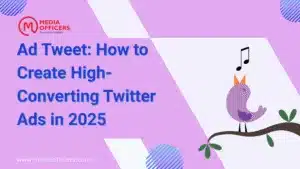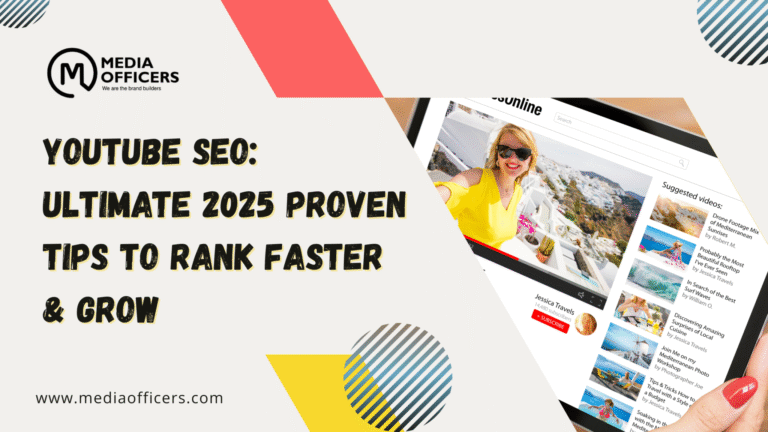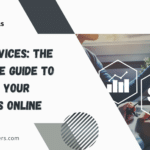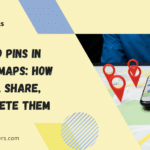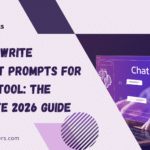Twitter has evolved significantly since Elon Musk’s acquisition and rebrand to “X,” but one thing remains constant: its power as an advertising platform. With over 450 million monthly active users and real-time engagement capabilities, Twitter continues to offer businesses unique opportunities to reach their target audiences through ad tweets.
Whether you’re a small business owner looking to increase brand awareness or a marketing professional seeking to drive conversions, mastering the art of ad tweets can transform your social media marketing strategy. This comprehensive guide will walk you through everything you need to know about creating high-converting Twitter ads that deliver real results.
From understanding the different types of ad tweets to implementing advanced targeting strategies, you’ll discover actionable insights that can help you maximize your return on investment. Let’s explore how to leverage Twitter’s advertising platform to grow your business and connect with your ideal customers.
What is an Ad Tweet?
An ad tweet is a paid promotional post on Twitter (now X) that appears in users’ timelines, search results, or trending sections. Unlike organic tweets that rely solely on your followers and organic reach, ad tweets use Twitter’s advertising platform to expand your content’s visibility to targeted audiences beyond your existing follower base.
The key difference between organic tweets and ad tweets lies in their reach and targeting capabilities. While organic tweets depend on engagement algorithms and follower activity, ad tweets allow you to specify exactly who sees your content based on demographics, interests, behaviors, and keywords.
Twitter offers several types of ad tweets to suit different marketing objectives:
Promoted Tweets appear directly in users’ timelines and search results, looking nearly identical to organic content but marked with a “Promoted” label. These are ideal for driving engagement, website traffic, or conversions.
Follower Ads focus on growing your account by promoting your profile to users likely to be interested in your content. These appear in the “Who to follow” section and targeted users’ timelines.
Promoted Trends allow you to promote a hashtag in the trending topics section, creating widespread awareness around your campaign or brand message.
Why Use Ad Tweets for Your Business?
Twitter’s advertising platform offers unique advantages that make ad tweets particularly valuable for businesses across all industries. The platform’s real-time nature creates opportunities for immediate engagement and response, making it perfect for time-sensitive promotions or trending topics.
One of Twitter’s strongest features is its sophisticated targeting capabilities. You can reach users based on their interests, the hashtags they follow, their location, and even their recent tweet activity. This precision targeting ensures your ad spend reaches the most relevant audience for your business.
Cost-effectiveness is another compelling reason to consider ad tweets. Twitter’s advertising costs are generally lower than platforms like Facebook or LinkedIn, while still delivering quality engagement. The average cost-per-click for Twitter ads ranges from $0.50 to $2.00, making it accessible for businesses with various budget sizes.
Twitter users are also highly engaged with branded content. Studies show that 93% of users who follow small and medium businesses on Twitter plan to purchase from them, indicating a strong commercial intent among the platform’s user base.
Types of Ad Tweets You Can Run
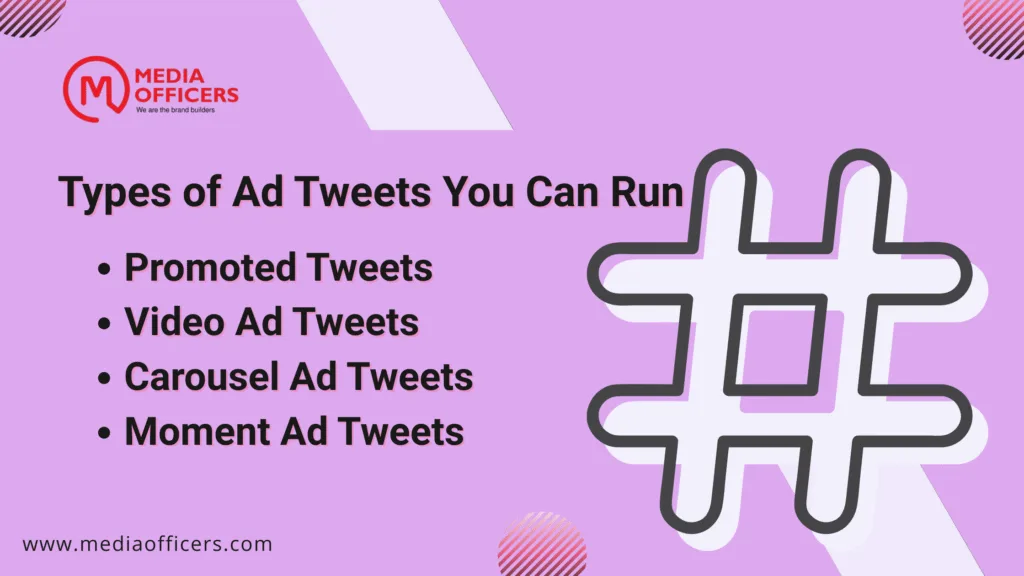
Understanding the different ad tweet formats available helps you choose the right approach for your specific marketing goals.
Promoted Tweets are your standard ad format that looks like regular tweets but reaches a broader, targeted audience. These work well for sharing blog posts, announcing new products, or promoting special offers. They support all standard tweet features including images, videos, polls, and links.
Video Ad Tweets leverage Twitter’s autoplay video feature to capture attention as users scroll through their timelines. Videos can be up to 2 minutes and 20 seconds long, though shorter videos typically perform better. These are excellent for product demonstrations, behind-the-scenes content, or testimonials.
Carousel Ad Tweets allow you to showcase multiple images or videos in a single tweet, perfect for displaying product ranges, step-by-step processes, or different angles of a single product.
Moment Ad Tweets let you promote curated collections of tweets around a specific topic or event, ideal for storytelling or comprehensive campaign narratives.
How to Create a High-Performing Ad Tweet
Creating compelling ad tweets requires balancing creativity with strategic thinking. Your copy should be engaging, concise, and include a clear call-to-action that tells users exactly what you want them to do.
Start with a strong hook in your first few words since these appear most prominently in users’ feeds. Use active language and create urgency when appropriate. For example, “Transform your morning routine with our new coffee blend” is more engaging than “We have a new coffee blend available.”
Visual elements significantly impact ad tweet performance. Tweets with images receive 150% more retweets than text-only tweets, while video tweets generate 6 times more retweets than photo tweets. Use high-quality, relevant visuals that complement your message and brand aesthetic.
Keep Twitter’s 280-character limit in mind while crafting your message. Leave room for hashtags and mentions, and remember that shorter tweets often perform better as they’re easier to read and engage with quickly.
Your call-to-action should be specific and actionable. Instead of generic phrases like “learn more,” use specific CTAs like “Download the free guide,” “Shop now,” or “Register for the webinar.”
Twitter Ad Targeting Strategies in 2025
Effective targeting is crucial for ad tweet success. Twitter offers several targeting options that allow you to reach your ideal audience with precision.
Demographic targeting includes age, gender, location, and language preferences. This basic targeting helps ensure your ads reach users who match your typical customer profile.
Interest targeting reaches users based on their expressed interests, the accounts they follow, and the content they engage with. This is particularly powerful for reaching users who are already interested in topics related to your business.
Keyword targeting shows your ads to users who have recently tweeted about or searched for specific terms. This real-time targeting captures users when they’re actively discussing relevant topics.
Custom audiences allow you to target existing customers, website visitors, or email subscribers. Upload your customer lists to Twitter or use the Twitter Pixel to create audiences based on website behavior.
Lookalike audiences help you find new potential customers who share characteristics with your existing customers, expanding your reach to similar users who are likely to be interested in your offerings.
Budgeting & Bidding for Ad Tweets
Twitter offers flexible bidding options to match different campaign objectives and budget constraints.
Cost-per-click (CPC) charging works best when your goal is driving traffic to your website or landing page. You only pay when someone clicks on your ad, making it cost-effective for conversion-focused campaigns.
Cost-per-mille (CPM) pricing charges per thousand impressions, ideal for brand awareness campaigns where you want maximum visibility regardless of clicks.
Cost-per-engagement (CPE) billing means you pay only when users engage with your tweet through likes, retweets, replies, or clicks. This model works well for engagement-focused campaigns.
Budget planning depends on your goals and target audience size. Start with smaller daily budgets ($10-20) to test different targeting options and ad formats before scaling successful campaigns. Twitter’s auction system means competitive keywords and popular audiences cost more, so factor this into your budget planning.
Measuring Success of Ad Tweets
Tracking the right metrics ensures you understand your ad tweet performance and can optimize for better results.
Impressions show how many times your ad appeared in users’ feeds, indicating your reach potential.
Engagement rate measures the percentage of users who interacted with your ad, showing how compelling your content is to your target audience.
Click-through rate (CTR) reveals how many users clicked on your ad after seeing it, indicating the effectiveness of your call-to-action and overall message.
Conversion tracking shows how many users completed desired actions after clicking your ad, such as making purchases or signing up for newsletters.
Twitter Analytics provides comprehensive performance data, but third-party tools like Hootsuite, Sprout Social, or Buffer offer additional insights and easier campaign management across multiple platforms.
A/B testing different ad variations helps optimize performance. Test different headlines, images, targeting options, or calls-to-action to identify what resonates best with your audience.
Pro Tips to Boost Ad Tweet Performance
Leverage trending hashtags relevant to your business to increase visibility and tap into ongoing conversations. Monitor trending topics regularly and join discussions when appropriate for your brand.
Timing matters significantly for Twitter engagement. Post during peak hours when your target audience is most active, typically weekdays between 9 AM and 3 PM, though this varies by industry and audience demographics.
Combine ad tweets with influencer partnerships for amplified reach. Partner with relevant influencers to create authentic content that promotes your products or services to their engaged followers.
Implement retargeting campaigns to re-engage users who previously interacted with your brand but didn’t convert. Create custom audiences based on website visitors or previous ad engagement to nurture these warm prospects.
Common Mistakes to Avoid with Ad Tweets
Overloading tweets with too much text makes them difficult to read and less engaging. Keep your message concise and focused on one primary objective per tweet.
Neglecting visual elements significantly reduces ad performance. Always include relevant, high-quality images or videos that support your message and catch users’ attention.
Targeting too broadly wastes budget on irrelevant audiences. Start with specific targeting parameters and gradually expand based on performance data rather than casting a wide net from the beginning.
Failing to track performance prevents optimization and improvement. Set up proper analytics tracking from the start and regularly review metrics to identify successful strategies and areas for improvement.
Real-World Success Example
A small e-commerce business selling eco-friendly kitchen products used promoted tweets to increase brand awareness and drive sales. Their campaign featured high-quality product images with the copy: “Transform your kitchen into an eco-paradise. Shop sustainable kitchenware that’s good for you and the planet. 🌱 Free shipping on orders over $50!”
The campaign targeted users interested in sustainability, cooking, and eco-friendly products within a 50-mile radius of major cities. They used CPE bidding to maximize engagement and set a daily budget of $30.
Results after 30 days included 2.3 million impressions, a 4.2% engagement rate, and 1,200 website clicks that generated $15,000 in revenue. The campaign’s success came from combining compelling visuals, clear value proposition, relevant targeting, and an attractive offer.
Frequently Asked Questions
How much should I budget for ad tweets as a small business?
Start with $10-20 per day to test different targeting options and ad formats. Once you identify what works, you can scale your budget based on performance and ROI.
What’s the best time to run ad tweets?
Peak engagement typically occurs on weekdays between 9 AM and 3 PM, but optimal timing varies by industry and target audience. Use Twitter Analytics to identify when your specific audience is most active.
How long should I run an ad tweet campaign?
Most campaigns benefit from running at least 7-14 days to gather sufficient performance data. However, evergreen content can run indefinitely with regular optimization and refreshing.
Can I promote old tweets as ads?
Yes, you can promote both new and existing tweets. However, ensure the content remains relevant and timely before promoting older posts.
What image sizes work best for ad tweets?
Use images that are 1200×675 pixels for optimal display across devices. Twitter automatically crops images, so ensure important elements are centered and visible in the preview.
Ready to Launch Your Ad Tweet Success Story
Ad tweets remain a powerful tool for businesses looking to expand their reach, engage with target audiences, and drive conversions through social media advertising. The platform’s real-time nature, sophisticated targeting options, and cost-effective pricing make it an attractive option for businesses of all sizes.
Success with ad tweets requires understanding your audience, crafting compelling content, and continuously optimizing based on performance data. Start with small budgets to test different approaches, then scale your most successful campaigns for maximum impact.
Remember that great ad tweets feel native to the platform while clearly communicating your value proposition. Focus on creating authentic, engaging content that provides value to users rather than purely promotional messages.
Need help creating ad tweets that convert and drive real business results? MediaOfficers specializes in social media advertising strategies that deliver measurable ROI. Contact us today to discuss how we can help you master Twitter advertising and grow your business through strategic ad tweet campaigns.

